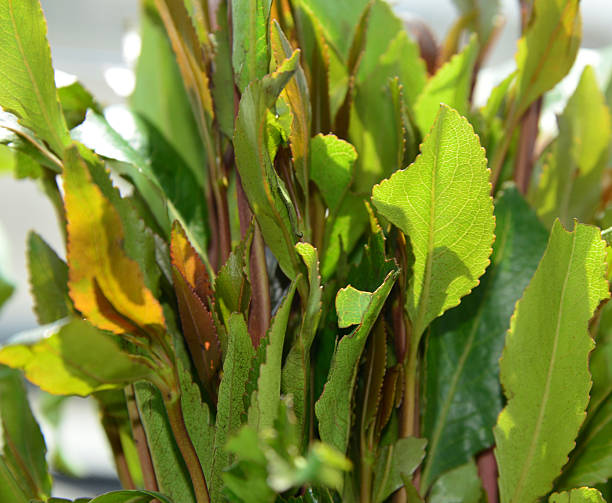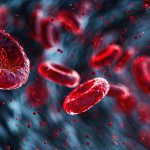Out of 32, the man has only four teeth left- all stained greenish-black, misshapen and completely rotten.
A man in scruffy attire walks into the clinic, the stench of alcohol and nicotine wafting as the 30-year-old enters the consultation room. Before sitting, he loudly demands that all his teeth be removed and replaced with dentures.
We convince him to sit first, take down his medical history, and move on to the dental examination. During this entire conversation, he is wearing a face mask. Nothing would have prepared me for what I’m about to see.
The dental surgeon asks him to remove his mask, and shortly, the demand for dentures makes sense: Out of 32, he has only four teeth left and all stained greenish-black, misshapen and completely rotten.
The doctor asks him whether he chews miraa (khat)or smokes cigarettes. He answers in the affirmative. Asked how long he’s been using these substances, the man says he cannot remember the exact duration, but it has been more than 20 years. He grew up in the ghetto, he explains, and liked hanging out with the boys in the local gangs — that’s how he ended up getting an early exposure to drugs.
Their stems, young buds and tender leaves are chewed to attain a state of euphoria, high energy and stimulation
As soon as the patient leaves, I take the brief opportunity to ask the dental surgeon why he asked specifically about the use of khat and smoking when he saw the man’s teeth. Up until this point, I knew about the impact of these drugs on the other systems of the body, but it had never crossed my mind how they affected one’s teeth.
Miraa, qat, chat, cat, ghat or khat – scientific name Catha edulis, is a shrub indigenous to Eastern Africa and Arabic countries. It differs from muguka, however, both contain the same stimulant properties.
Their stems, young buds and tender leaves are chewed to attain a state of euphoria, high energy and stimulation. The psychoactive effects of both miraa and muguka are attributed to the active compounds in the plant, cathinone and cathine, with potency being higher in the leaves of muguka.
The use of miraa and muguka has become increasingly widespread in Kenya, with many ‘jaba bases’ sprouting up everywhere, making them among the most abused drugs in the country. Its users are mainly men in their twenties and thirties, with women also acquiring the habit with the increasing popularity of the cheap and widely available drug. Most users report using miraa and muguka for a myriad of reasons; to increase alertness, boost mood, work for longer hours, kill time and to socialise.
Other effects are migraine headaches, risk of stroke and heart attacks, liver cirrhosis, constipation and gastric cancer
However, many studies have shown the detrimental effects of abusing this psychoactive plant. Side effects that have been documented include depression, anxiety, insomnia, manic behaviour, paranoia, psychosis, high blood pressure, low sex drive and poor sexual performance. Other effects are migraine headaches, an increase in the risk of stroke and heart attacks, liver cirrhosis, constipation and gastric cancer, among many others.
Not only do these drugs cause the aforementioned harm, but they also cause devastating damage to the users’ oral health as the dental surgeon proceeded to explain: First, miraa leaves are bitter, and so most miraa users chew them together with gum for a more appealing taste. Bacteria thrive in such an environment, producing substances which, over time, corrode the teeth, leading to decay and cavities.
Second, the leaves tend to dry out the mouth fast because of constant chewing, so users almost always have a drink with sodas and other sugary drinks as their preference. Third- miraa users have the leaves in their mouth for many hours throughout the day, wearing out their teeth quickly.
Oral effects of chewing miraa include teeth discolouration, oral ulcers, gingival bleeding and increased risk of oral cancers
Fourth – the dental surgeon continued, the plants have compounds that cause direct harm to the teeth and gums. Other reported oral effects of chewing khat include teeth discolouration, oral ulcers, gingival bleeding and an increased risk of oral cancers.
Many khat and muguka users tend to be polydrug users, that is, they use other recreational drugs like sipping alcohol and smoking while chewing.
When it comes to cigarette smoking, he continued, it is one of the major causes of gum disease, which affects the bone structure that holds the teeth in place. In severe cases of gum disease, it causes teeth to fall off. Gum disease is the major cause of tooth loss in adults. Cigarettes have also been shown to cause teeth and oral discolouration, oral ulcers and increase the risk of oral cancers.
As for the man with only four stained teeth, I never saw him again after he was directed to another room for his procedures that day. Perhaps he underwent extractions or even began the process for dentures. While I’ll never know his true outcome, I hope his visit marked the start of a healthier chapter for him, free from the grip of miraa and cigarettes.
In conclusion, the harmful effects of miraa, muguka, and cigarette use extend far beyond their immediate psychoactive impacts, manifesting visibly in the devastating deterioration of oral health. The story of our patient underscores a pressing public health challenge that requires greater awareness, preventive education, and intervention. Addressing these habits is not just about protecting teeth—it’s about preserving overall well-being. By shedding light on the consequences and encouraging healthier choices, we can take steps toward improving not only dental health, but also the broader quality of life for those affected.
Dr Nyandia Maina is a medical doctor, photo-essayist and creative writer.





















